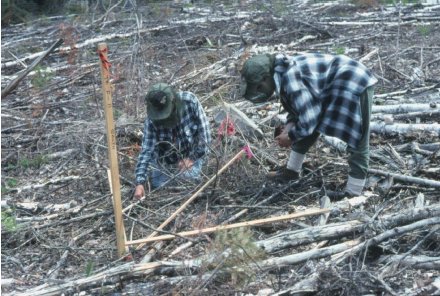|
Herbaceous Layer Diversity and Stand Structure in Partial Cuts, Riparian
Buffers and Tree Islands
Dr. Mark Roberts, University of New Brunswick Faculty of Forestry
and Environmental Management (email: roberts@unb.ca)
Implementing sustainable forest management requires accurate predictive
models of forest community response to management treatments. Our work
to date has focused on impacts of clearcutting and plantation management
on herbaceous layer diversity. As yet, we have limited knowledge of
the processes that regulate the response of the herbaceous layer (vascular
plants <1 m tall, including seedlings of trees and shrubs) and stand
structure to forest harvesting in Acadian forests. In addition, FMF
partners have expressed the need to address other management treatments
including (a) shelterwood and partial harvesting systems, and (b) riparian
buffer management alternatives such lobe-and-cove margins and selection
harvest. The vascular plant component of this integrated study (by the
Hayward Brook Watershed Study group) will address these needs. The objectives
are: 1) to evaluate the impacts of management treatments that have not
been covered in previous studies in terms of species composition, diversity
and dynamics of the herbaceous layer and stand structure, 2) to improve
our understanding of the disturbance characteristics created by different
forestry practices and how they control post-harvest response, and 3)
to assess value of riparian buffer strips, islands and other leave patches
of varying sizes and shapes as plant refugia. Management recommendations
for maintaining understory diversity and stand structure in managed
stands will be made.

Surveying herbaceous plants in a clearcut
Click
to Return to the Main Page
|

